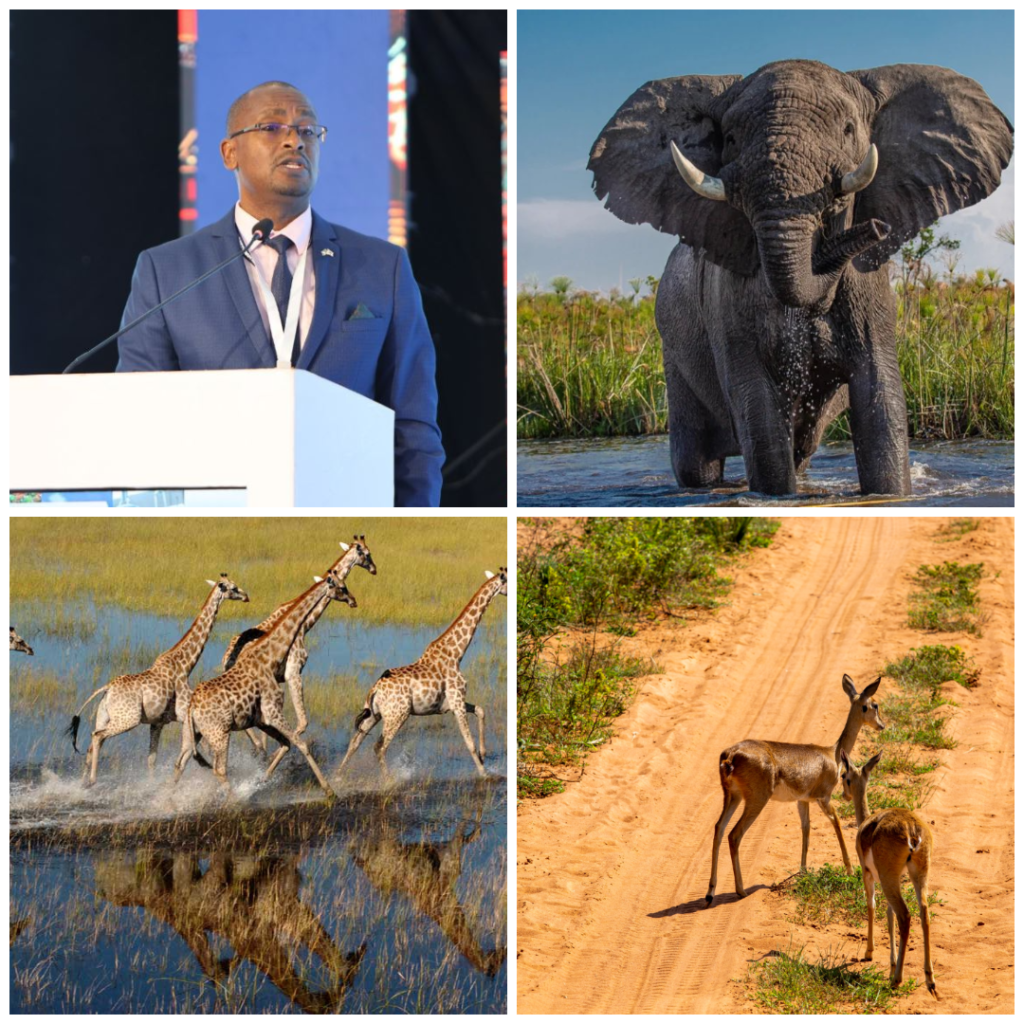
The Petroleum Authority of Uganda (PAU), which is headed Ernest Rubondo, the Executive Director, has reaffirmed its dedication to sustainable oil and gas development, prioritizing the conservation of Uganda’s rich wildlife heritage in the Albertine region.
This strategic approach aims to strike a delicate balance between economic growth and environmental stewardship, ultimately promoting Uganda’s thriving tourism sector.
The resolve is contained in a study conducted by PAU and it development partners titled; ‘LINKAGES BETWEEN TOURISM AND OIL AND GAS SECTORS OF UGANDA’, which was aimed at generating information to support evidence-based planning, decision making and thought processes on how tourism and hospitality enterprises can leverage opportunities arising from oil and gas development and create lasting socio-economic value beyond the life span of the oil and gas resources.
The specific objectives of the study, which was conducted by a team led by Dr. Jim Ayorekire, were to:
Establish the status of tourist attractions and current stock of tourism facilities in Buliisa, Hoima, Kikuube, Nwoya, Masindi, Kakumiro, Kyankwanzi, Mubende, Gomba, Sembabule, Lwengo, Rakai and Kyotera districts
Articulately map tourism-related facilities, infrastructure and services by location and economic activity while highlighting gaps and recommending possible solutions, interventions and opportunities for investment.
Review and document how the activities undertaken so far in the oil and gas sector have impacted the tourism sector to date, including a SWOT (Strengths, Weaknesses, Opportunities and Threats analyses.
Conduct a human resource assessment (including skills needs analysis) along the tourism value chain in the Albertine Graben and EACOP (East African Crude Oil Pipeline) traversed districts while establishing critical capacity development needs of public and private sector tourism stakeholders in the region.
Review, harmonise and align various tourism development strategies and develop a targeted sector-specific strategy and plan with a phased implementation approach, including a clear monitoring and evaluation framework that would ensure realization of the identified linkages to the greatest measurable extent possible.
Uganda’s Albertine Graben: A Haven of Biodiversity
The Albertine Graben has 10 out of the 22 protected areas (national parks and wildlife reserves) in Uganda, which are tourism destinations in Uganda. The region is also recognized internationally as home to the threatened and endemic mountain gorilla, and there are a number of cultural heritage resources, archaeological and historic sites. This unique convergence presents both immense opportunities and critical responsibilities for sustainable development because it has since grown from 255,558 visitors in 2015 to 367,869 in 2022.
Ensuring Sustainable Development
To address these challenges, the PAU has implemented a multifaceted strategy, comprising:
Strong Policies and Laws
The National Oil and Gas Policy, National Environment Act (2019), and Wildlife Act (2019) provide a robust framework for sustainable development.
Environmental Monitoring Tools
The Albertine Graben Environmental Sensitivity Atlas and National Oil Spill Contingency Plan enable proactive monitoring and mitigation of environmental risks.
Institutional Strengthening
Empowering agencies, local authorities, and NGOs to mitigate environmental risks ensures a collaborative approach to conservation.
Conservation Efforts and Tourism
The Uganda Wildlife Authority (UWA) plays a vital role in conserving Uganda’s wildlife heritage. With 10 national parks, 12 wildlife reserves, and 13 wildlife sanctuaries under its management, UWA works tirelessly to protect biodiversity and promote sustainable tourism practices. With the onset of the lucrative oil and gas sector, UWA and PAU are set to join efforts to conserve wildlife in the projected-affected areas.
East African Crude Oil Pipeline (EACOP) and Environmental Considerations
The development of the EACOP, a 1,443 km pipeline transporting crude oil from Uganda to Tanzania, has raised concerns about potential environmental impacts. The study also covered the oil and pipeline districts, which include: Buliisa, Hoima, Kikuube, Nwoya, Kakumiro, Kyankwanzi, Mubende, Gomba, Sembabule, Lwengo, Rakai, Kyotera and Masindi. In response, the PAU and its partners are implementing stringent environmental and social safeguards to minimize risks and ensure compliance with international standards in all these districts.
Future of Uganda’s Tourism Sector
As Uganda’s oil and gas industry continues to grow, the PAU’s commitment to sustainable development and wildlife conservation ensures a bright future for the country’s tourism sector.
By balancing economic growth with environmental stewardship, Uganda can showcase its incredible natural beauty, rich cultural heritage, and commitment to sustainability, attracting tourists and investors alike.
